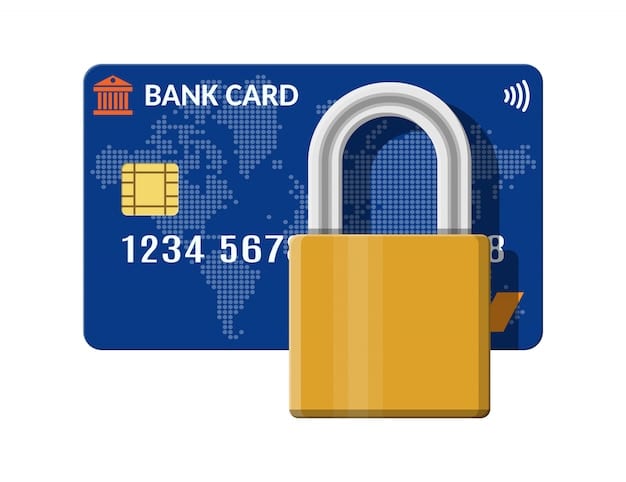Avoid payment processing mistakes: Why it matters for US e-commerce businesses

Running a successful e-commerce business in the US isn’t just about products or marketing, getting payments right is just as important. Avoid payment processing mistakes from the start, and you’ll protect revenue, build customer trust, and grow faster.
But where do most online stores go wrong? From weak security setups to clunky checkout flows, small errors can snowball into lost sales and chargebacks. If you’re serious about scaling smoothly, tackling these issues is non-negotiable.
In this guide, you’ll learn exactly how to avoid these costly mistakes with a practical checklist tailored to US e-commerce operations. Let’s simplify payment processing, and protect your bottom line.
Understanding payment processing in the US e-commerce landscape
Avoid payment processing mistakes by first understanding the landscape you’re working within. The US e-commerce ecosystem is highly regulated, fast-moving, and increasingly customer-driven. One misstep in payment handling could mean fines or unhappy buyers.
You’re not just moving money, you’re protecting sensitive data, ensuring smooth operations, and making each transaction feel effortless. Recognizing this complexity helps you prioritize the right systems and security.
Grasping how payments are routed, how fraud is detected, and how funds settle will give you the edge. Don’t underestimate the power of solid infrastructure paired with compliance awareness in creating a seamless buying experience.
Choosing the right payment gateway
To avoid payment processing mistakes, the first step is choosing a payment gateway that suits your business model. This technology connects your store to financial networks, so compatibility and reliability are key.
Go beyond surface-level pricing. Look for real-time reporting, fraud tools, and customer support that match your business scale. A few saved cents per transaction mean nothing if it slows you down or puts data at risk.
A great gateway simplifies checkout, secures customer data, and supports growth. Choose a system that evolves with you, not one you’ll outgrow in six months.
Key considerations for US e-commerce businesses
- Transaction Fees: Compare the transaction fees charged by different gateways to find the most cost-effective option for your business.
- Supported Payment Methods: Ensure the gateway supports the payment methods preferred by your customer base, such as credit cards, debit cards, and digital wallets like PayPal and Apple Pay.
- Integration Ease: Choose a gateway that integrates seamlessly with your e-commerce platform to avoid technical issues and streamline the checkout process.
- Security Features: Prioritize gateways that offer robust security features like tokenization and fraud detection to protect customer data and prevent fraudulent transactions.
By carefully evaluating these factors, you can select a payment gateway that aligns with your business needs and provides a secure, efficient payment experience for your customers.

Ensuring PCI compliance to protect customer data
Avoid payment processing mistakes by treating PCI compliance as a top priority. The Payment Card Industry Data Security Standard (PCI DSS) is your blueprint for safely handling cardholder data.
You don’t need to be a cybersecurity expert, but you do need to follow the rules. That includes encrypting data, limiting access, and maintaining secure infrastructure to defend against breaches.
Failing PCI compliance doesn’t just cost you money, it can erode customer trust instantly. Make this a foundation of your payment process, not a checkbox.
Understanding PCI DSS requirements
PCI DSS isn’t optional if you accept credit cards. It outlines 12 requirements covering security protocols, access controls, and data protection strategies, all designed to reduce the risk of payment fraud.
Keep your systems updated, document your compliance, and routinely assess vulnerabilities. These aren’t just recommendations, they’re essentials for operating securely in the US.
Whether you run your payments in-house or rely on third-party providers, make sure your full tech stack is compliant. One weak link can expose your entire operation.
Steps to achieve PCI compliance
Start by thoroughly assessing your payment systems to uncover any weak spots or outdated components. This evaluation helps you pinpoint areas needing updates to meet PCI compliance requirements.
Next, implement strong security controls like firewalls, encryption, and intrusion detection tools to shield sensitive cardholder data from breaches. These layers of protection are essential to preventing costly cyberattacks.
Ongoing monitoring is equally important, regularly check for system vulnerabilities and address them quickly. Also, train your employees on PCI DSS protocols to ensure everyone understands how to handle customer data safely.
Optimizing the Checkout Process for a Seamless Customer Experience
To avoid payment processing mistakes, never overlook the checkout experience. This is where your customers decide to buy, or bail. Clunky forms and confusing steps can tank conversions.
Keep it smooth. Let users pay as guests, auto-fill known info, and use their preferred method, credit, debit, or digital wallet. Think like a shopper, not just a seller.
A frictionless checkout builds trust and encourages repeat sales. It’s not just a technical task, it’s a core part of the customer journey.
Simplifying the checkout process
Fewer clicks. Less typing. Clear instructions. That’s how to avoid payment mistakes during checkout. Streamline every interaction so your customers aren’t second-guessing their purchase.
Offer one-page checkouts, minimize required fields, and display progress indicators so users know where they are in the process. These small tweaks dramatically reduce cart abandonment.
Don’t forget to test it often. A mobile-friendly checkout that’s fast and intuitive gives you a major competitive edge.
Strategies to improve checkout conversion
Offer clear, step-by-step instructions throughout the checkout process to help customers complete their transactions with ease. Clarity reduces friction and boosts overall satisfaction.
Include multiple payment options, such as credit cards, debit cards, and digital wallets, to meet the preferences of a diverse customer base and avoid lost sales.
Make sure the checkout is optimized for mobile users and display visible security badges. This builds trust and ensures a smooth, secure experience across all devices.
Addressing chargebacks and fraud prevention
Avoid payment processing mistakes by staying ahead of fraud. Chargebacks and scams aren’t just annoying, they’re expensive. Too many, and your business reputation (and profits) take a hit.
Use fraud detection tools that analyze patterns and spot suspicious behavior before it becomes a problem. Prevention is always cheaper than response.
Set up systems that balance security and convenience. That way, honest customers still enjoy a smooth checkout, while fraudsters are blocked.
Implementing fraud detection tools
Fraud detection tools use machine learning, location checks, and transaction tracking to catch red flags in real-time. They work quietly in the background, but can save thousands in losses.
These tools can flag duplicate orders, strange shipping addresses, or unusual spending behaviors. When integrated with your gateway, they create a powerful fraud shield.
Just as important: configure alerts and have a response plan. Detection without action doesn’t protect your business.
Best practices for chargeback management
Use an Address Verification System (AVS) and require the Card Verification Value (CVV) to confirm the buyer’s identity and reduce fraudulent transactions during checkout.
Continuously monitor transactions for suspicious activity, like repeated orders from the same IP or unusually large purchases, to catch potential fraud early.
Maintain a clear, visible return policy to reduce misunderstandings and disputes. These measures help prevent chargebacks and protect your business financially.
Mobile payment optimization for a growing mobile audience
To avoid payment processing mistakes, optimize for mobile. Shoppers aren’t waiting to get home, they’re browsing and buying on the go. If your payment system isn’t mobile-friendly, you’re losing sales.
Responsive design, touch-friendly buttons, and quick load times are non-negotiable. Mobile users expect speed and simplicity at every tap.
You don’t need an app to offer a great mobile checkout, just a mobile-optimized site with seamless payment flows that support mobile wallets and fast form-fills.
Responsive design and mobile-friendly layouts
Think beyond aesthetics. A responsive layout ensures your payment process works across devices. But that’s just step one, your entire funnel must perform flawlessly on small screens.
Test your mobile checkout regularly, not just on iPhones but across Android and tablets too. Every second counts when shoppers are multitasking.
Add express payment options like Apple Pay, and watch your mobile conversion rates climb.
Mobile payment optimization
Simplify checkout forms with auto-fill features to reduce typing on small screens, making the mobile experience quicker and more user-friendly.
Enable mobile payment options like Apple Pay and Google Pay, and ensure your site loads quickly to prevent cart abandonment caused by slow performance.
Design with mobile in mind by using touch-friendly buttons that are easy to tap. These steps ensure a smooth, conversion-friendly mobile shopping experience.

The importance of recurring billing and subscription management
Avoid payment processing mistakes in subscription-based businesses by automating recurring billing. Manual invoicing or clunky systems lead to missed renewals and frustrated customers.
Recurring billing isn’t just about collecting payments, it’s about customer satisfaction, predictable cash flow, and retention. Done right, it drives long-term growth.
Smart businesses offer flexible plans, easy cancellations, and real-time updates. Keep your users informed and in control, and they’ll keep coming back.
Automated billing systems
Automation is your ally. Use subscription management tools that trigger payments, send reminders, and update failed transactions without manual input.
These systems handle failed charges, retries, and renewals with minimal friction. More importantly, they free your team to focus on growth and service, not payment drama.
Reliable automation also builds confidence. Your users will appreciate knowing their service won’t suddenly stop due to a billing error.
Strategies for subscription management
- Flexible Subscription Options: Offer flexible subscription options to cater to different customer needs and preferences.
- Automated Payment Reminders: Send automated payment reminders to customers before their subscriptions renew to reduce involuntary churn.
- Easy Subscription Management: Provide customers with easy access to manage their subscriptions, including the ability to update payment information and cancel subscriptions.
- Subscription Analytics: Track subscription metrics such as churn rate and customer lifetime value to identify areas for improvement.
By implementing these strategies, you can optimize your recurring billing process, enhance customer retention, and drive long-term revenue growth.
Avoiding common payment processing mistakes: a checklist for US e-commerce businesses to ensure smooth transactions requires attention to detail and a commitment to best practices.
From choosing the right payment gateway to ensuring PCI compliance and optimizing the checkout process, each aspect plays a crucial role in providing a secure and seamless payment experience for your customers.
By implementing the strategies outlined in this checklist, US e-commerce businesses can minimize risks, enhance customer satisfaction, and drive growth.
| Key Point | Brief Description |
|---|---|
| ✔️ PCI Compliance | Ensuring adherence to data security standards. |
| 🛒 Optimize Checkout | Simplifying the payment process for customers. |
| 🛡️ Fraud Prevention | Implementing tools to detect fraudulent transactions. |
| 📱 Mobile Payments | Optimizing payment process for mobile devices. |
Frequently asked questions (FAQ)
▼
PCI compliance is essential for protecting customer data and avoiding hefty fines. By adhering to PCI DSS standards, businesses demonstrate their commitment to data security, building trust and safeguarding sensitive information.
▼
To optimize the checkout process, simplify forms, offer multiple payment options, ensure mobile optimization, and display security badges. These steps make purchasing easier and quicker, reducing checkout abandonment and improving conversions.
▼
Businesses can prevent fraud by using fraud detection tools, implementing AVS and CVV verification, monitoring transactions for suspicious patterns, and maintaining a clear return policy. These measures help identify and block fraudulent orders.
▼
Mobile payment optimization is crucial because an increasing number of customers shop on mobile devices. A mobile-friendly payment experience ensures easy completion of purchases, enhancing customer satisfaction and increasing revenue.
▼
Recurring billing is essential for subscription businesses as it ensures timely payments, reduces customer churn, and improves cash flow. Automated systems, flexible options, and effective communication enhance customer retention.
By addressing each of these critical areas, e-commerce businesses in the US can create a secure, efficient, and customer-friendly payment processing system. This, in turn, leads to increased customer satisfaction, fewer transaction issues, and a stronger bottom line.





